AP Biology Final Exam review
1/57
There's no tags or description
Looks like no tags are added yet.
Name | Mastery | Learn | Test | Matching | Spaced |
|---|
No study sessions yet.
58 Terms
Natural Selection
Organisms with desirable traits are more likely to survive and reproduce, which passes those traits on to the offspring. "Selecting" for the traits that give an advantage.
Prezygotic barriers
block fertilization from occurring by...
1. impeding different species from attempting to mate
2. Preventing the successful completion of mating
3. Hindering fertilization if mating is successful
Habitat isolation
Two species encounter each other rarely, or not at all, because they occupy different habitats, even though not isolated by physical barriers
Temporal isolation
Species that breed at different times of the day, different seasons, or different years cannot mix their gametes
Behavioral isolation
courtship rituals and other behaviors unique to a species are effective barriers
Mechanical Isolation
Morphological differences prevent successful mating
Gametic isolation
Sperm of one species may not be able to fertilize eggs of another species
Postzygotic barriers
prevent the hybrid zygote from developing into a viable, fertile adult by...
1. Reduced hybrid viability
2. Reduced hybrid fertility
3. Hybrid breakdown
Reduced hybrid viability
genes of the different parent species may interact and impair the hybrid's development or survival
Reduced hybrid fertility
Even if hybrids are vigorous, they may be sterile
Hybrid Breakdown
Some first-generation hybrids are fertile, but when they mate with another species or with either parent species, offspring of the next generation are feeble or sterile
Hardy Weinberg equations
p + q = 1
p^2 + 2pq + q^2 = 1
Gene flow
the transfer of genes from one population to another, reducing genetic variation. This can fuse two species into one. Violates H-W
Mutation
The ultimate source of genetic variation. They come from a change in the DNA from an error. Violates H-W
Nonrandom mating
Individuals are more or less likely to mate with others because of genotypes/phenotypes. Violates H-W
Population size
Small populations are more susceptible to genetic drift and reduced genetic diversity. A larger population makes this less likely. A large population would not violate H-W , but a small one might
Stabilizing selection
Selects against the different extremes and for the average.
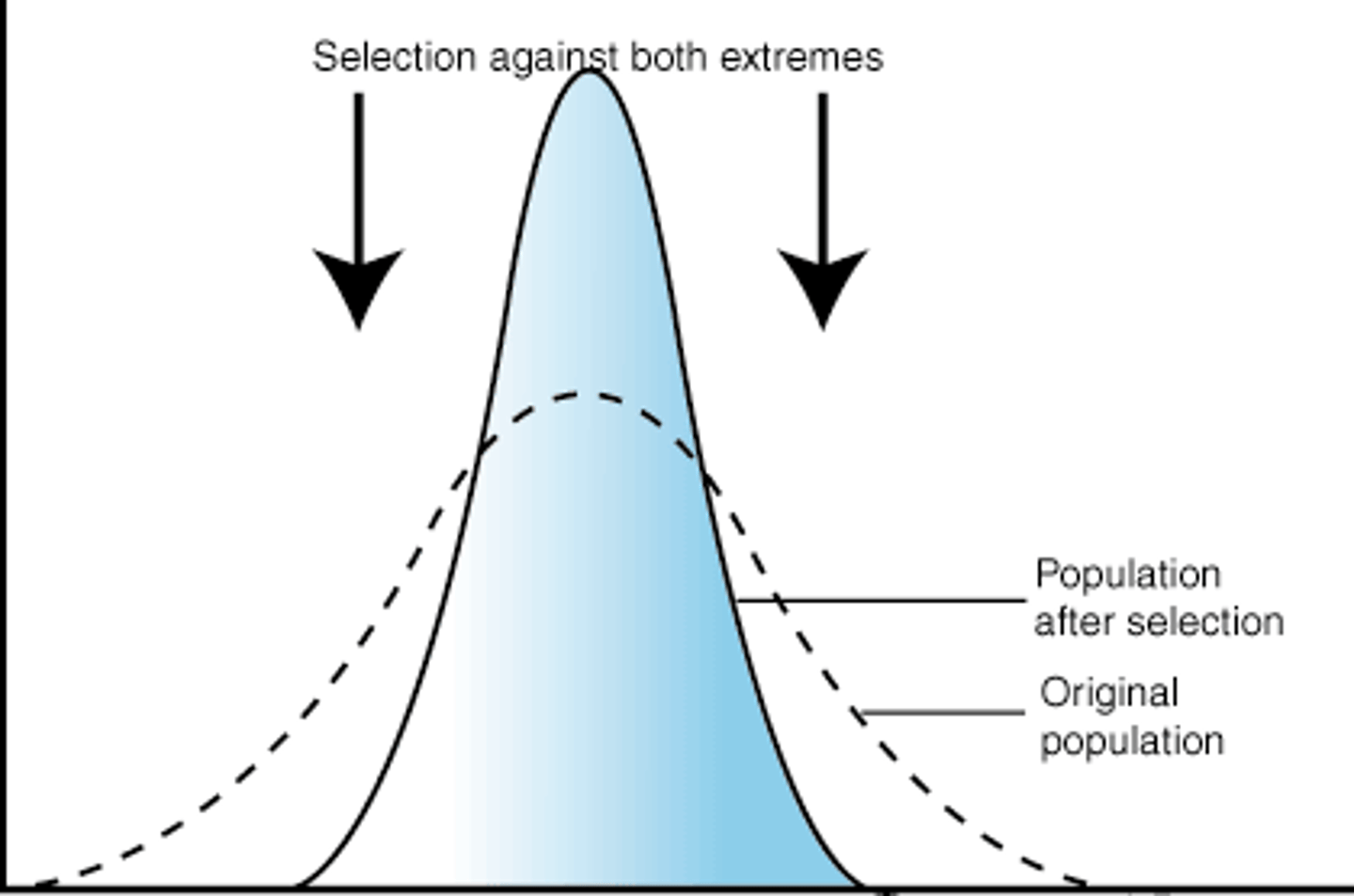
Directional selection
Selects for one side of the extreme (away from the average)
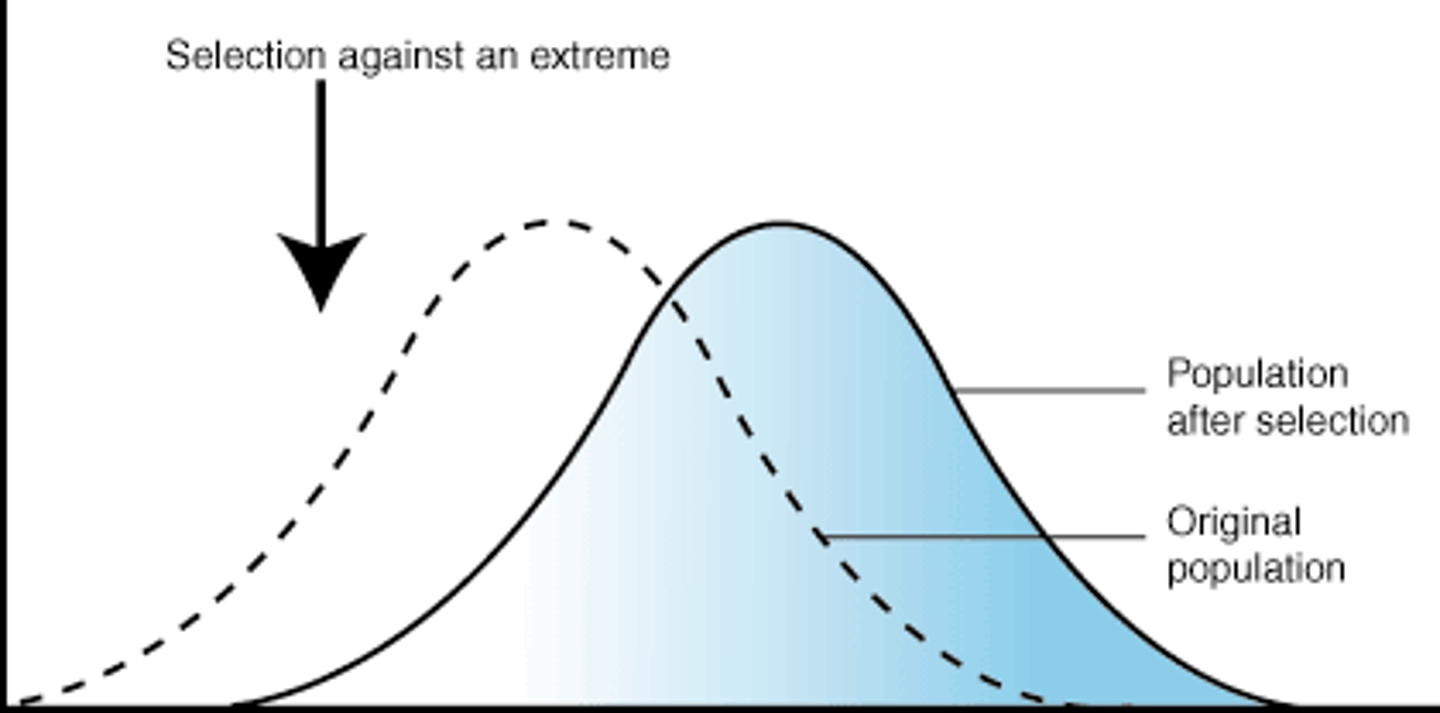
Disruptive selection
Selects for both extremes but against the intermediate
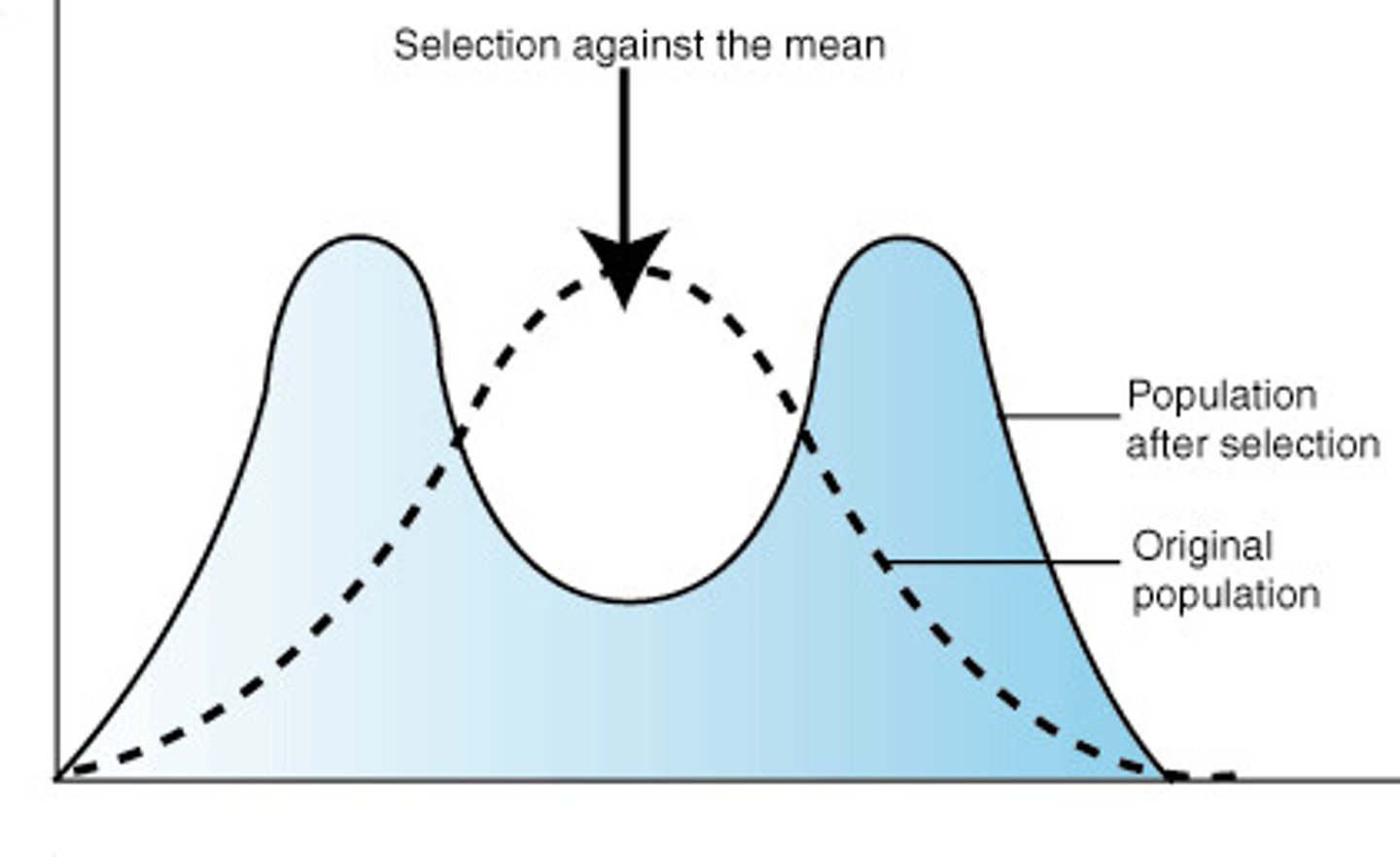
Speciation
the process by which one species splits into two or more species
Allopatric speciation
gene flow is interrupted when a population is divided into geographically isolated subpopulations
Sympatric speciation
takes place in populations that live in the same geographic area. Occurs through polyploidy, habitat differentiation, and sexual selection
Ecology
the scientific study of the interactions between organisms and the environment. They determine the distribution of organisms and their abundance
Predation
(+/-) refers to an interaction in which one species, the predator, kills and eats the other, the prey
Mutualism
(+/+) an interspecific interaction that benefits both species
Commensalism
(+/0) one species is benefited while the other is neither harmed nor helped
Parasitism
(+/-) one organism, the parasite, derives nourishment from another organism, the host, which is harmed in the process
Endoparasites
live within the body of the host (like a tapeworm)
Ectoparasites
live on the external surface of a host (like a tick)
Competition
(-/-) organisms either within a species or between species compete for the same resources (food, shelter, water) and both are harmed
Herbivory
(+/-) an interaction where a herbivore eats parts of a plant or alga
Carrying capacity (K)
is the maximum population size the environment can support. Varies with the abundance of limiting resources
Exponential growth
results in a J shaped curve. It characterizes populations in new environments or rebounding populations. Cannot be sustained for long
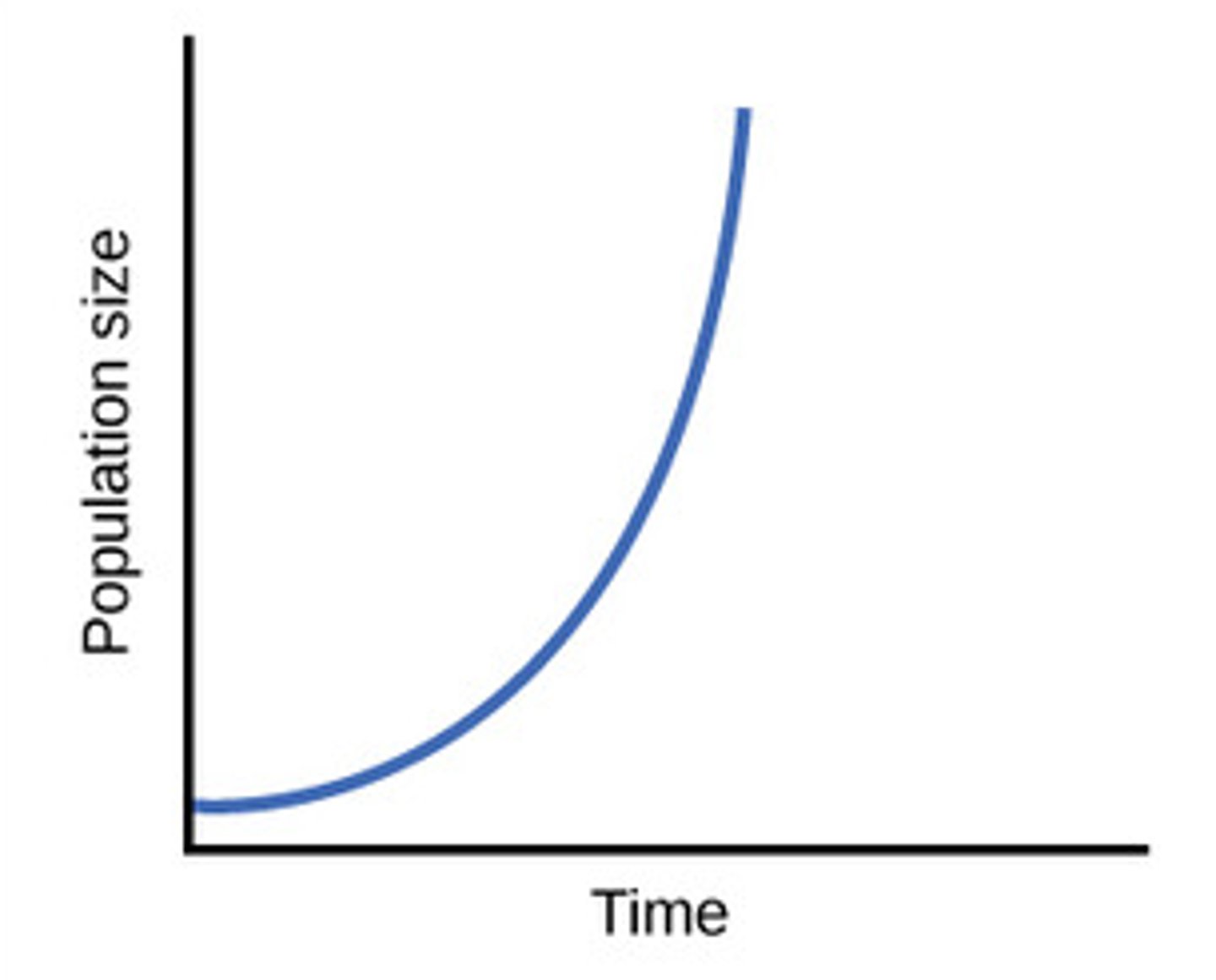
Logistical growth
results in an S shaped curve. The rate of increase declines as carrying capacity is reached
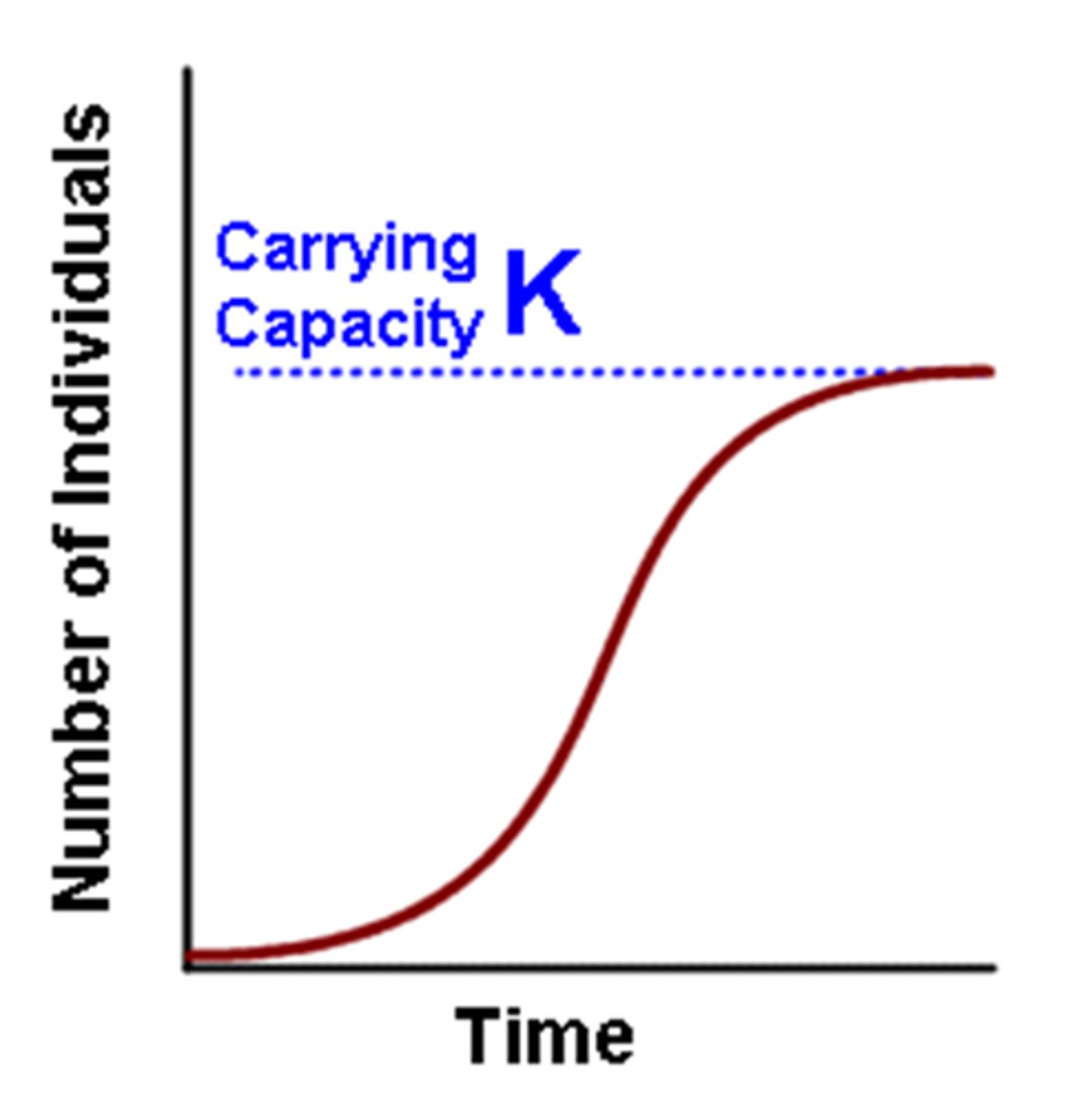
Ecological niche
the specific set of biotic and abiotic resources used by an organism, a role
Abiotic factors
the nonliving chemical and physical attributes of the environment
Examples of abiotic factors
Temperature, water, oxygen, salinity, sunlight, rocks. (soil can be both)
Biotic factors
the other organisms that make up the living component of the environment
Examples of biotic factors
Predation, herbivory, mutualism, parasitism, competition
Clumped distribution
Most common pattern of dispersion, individuals congregate in patches. This may be influenced by resource availability and behavior
Uniform distribution
Individuals are evenly distributed. May be influenced by territoriality
Random distribution
the position of each individual is independent of other individuals. Occurs in the absence of strong attractions or repulsions
Type 1 survivorship curve
low death rates during early/middle life and increase in older age groups
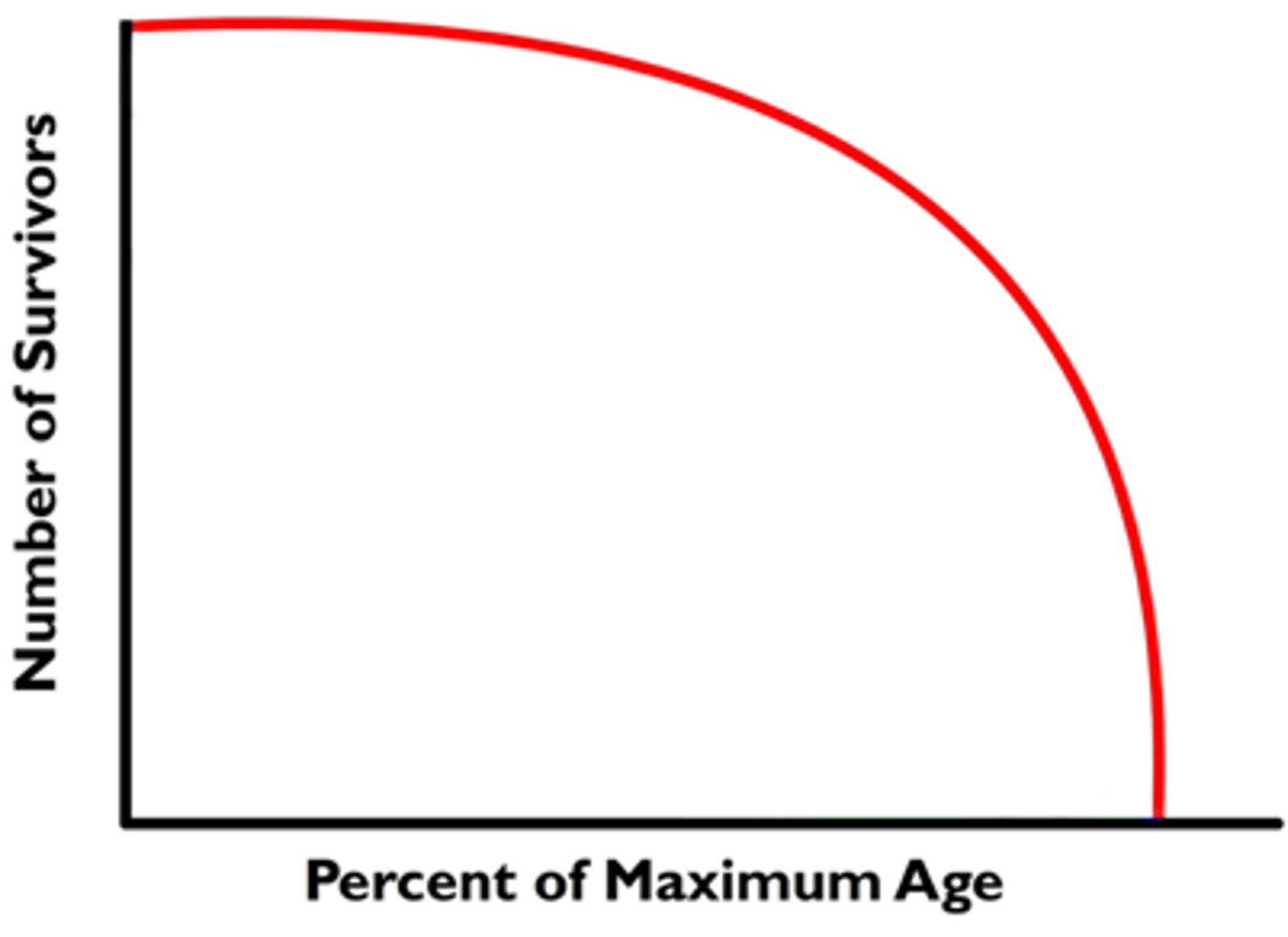
Type 2 survivorship curve
a constant death rate over the organisms life span
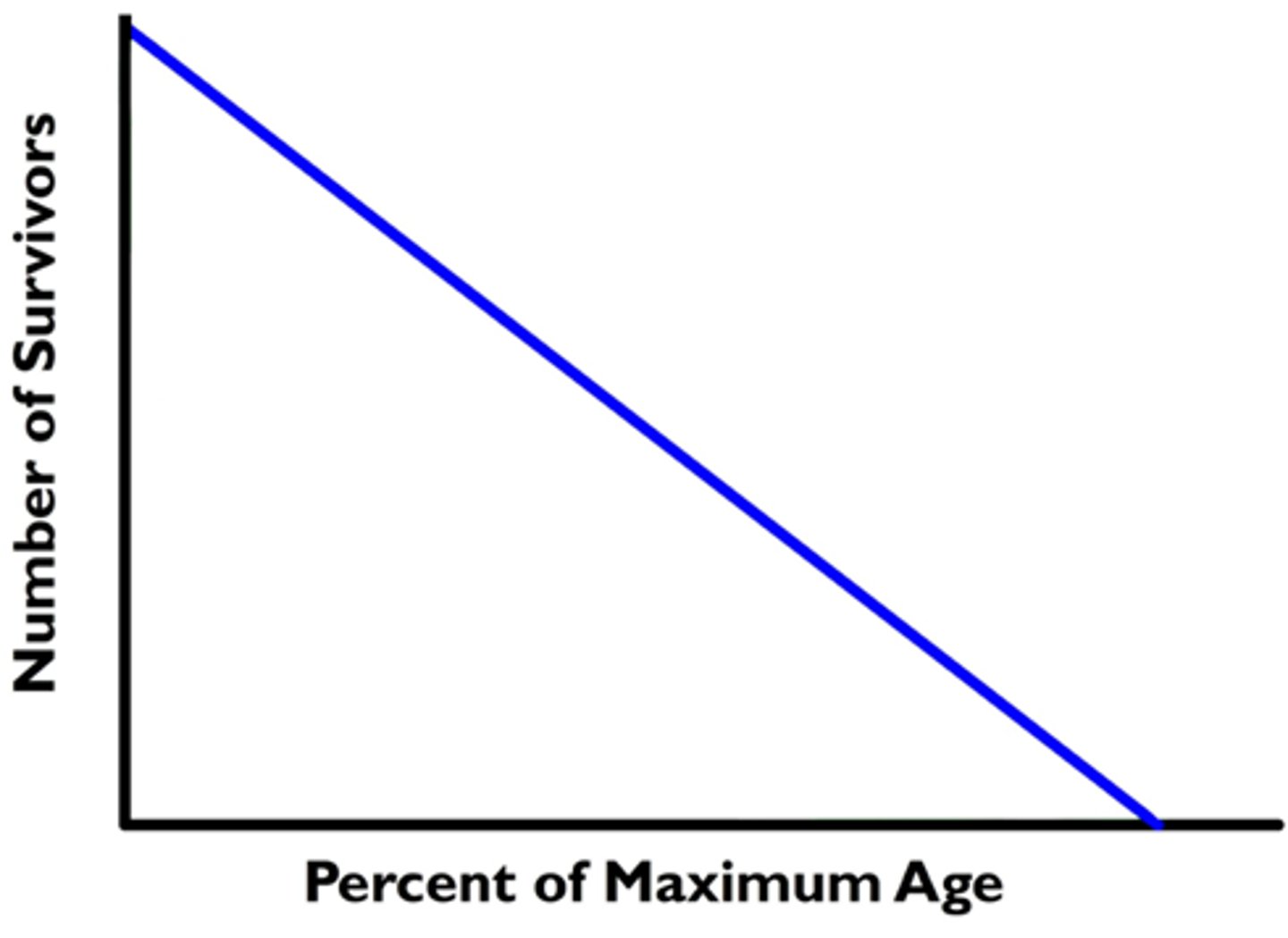
Type 3 survivorship curve
high death rates for the young and lower death rate for survivors
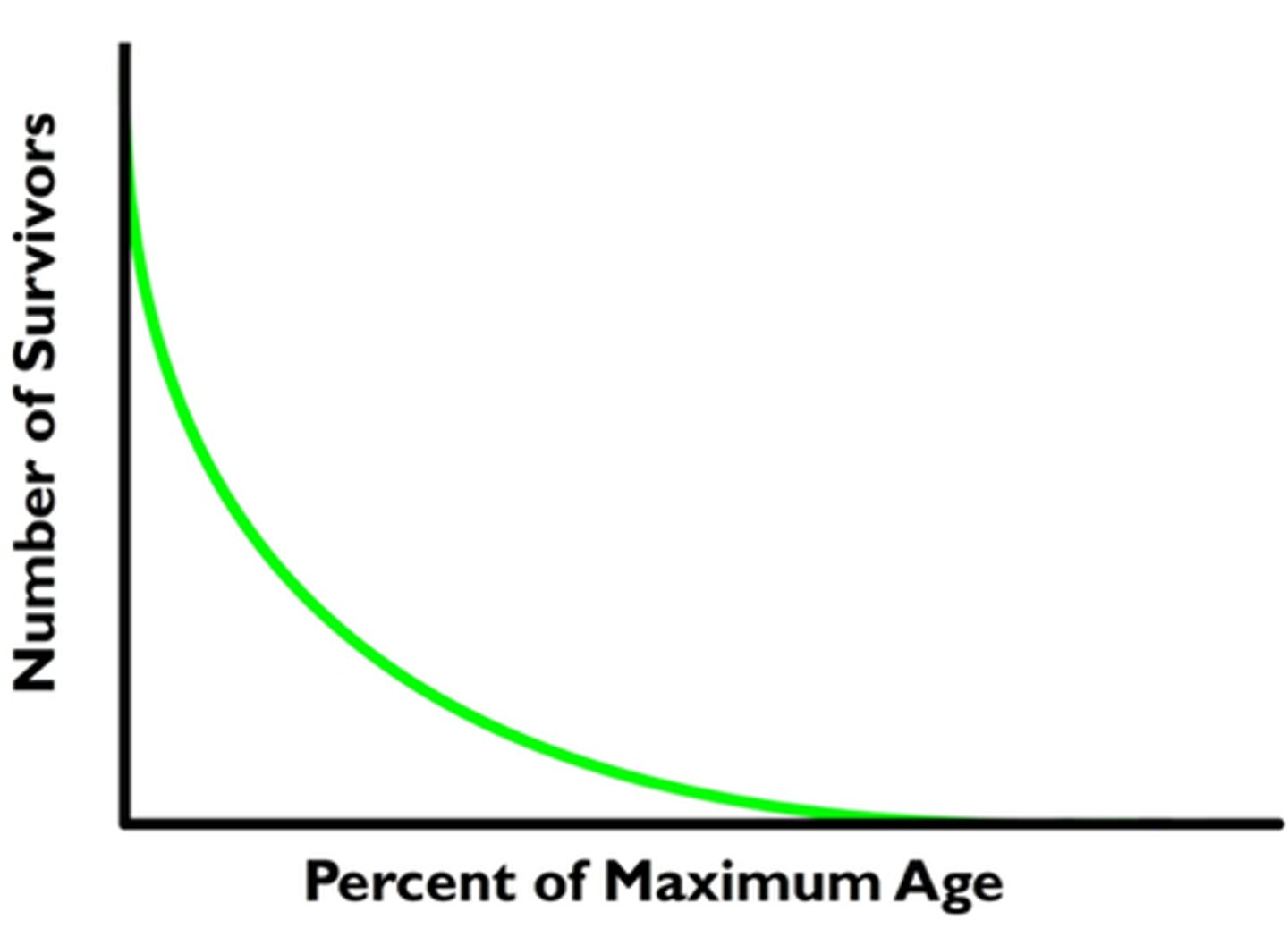
K-selection
or density-dependent selection, selects for life history traits that are sensitive to population density
R-selection
or density-independent selection, selects for life history traits that maximize reproduction
Community
a group of populations of different species in an area
Population
a group of individuals of the same species living in an area
Ecosystem
the community of organisms in an area and the physical factors with which they interact
Landscape
is a mosaic of connected ecosystems
Global ecology
is concerned with the biosphere, or global ecosystem, which is the sum of all the planet's ecosystems. It looks at the influence of energy and materials on organisms
Density-dependent factor
birth and death rates fall and rise with population density
Density-independent factor
birth and death rates do not change with population density
Regulator
uses internal mechanisms to control internal change despite external changes
Conformer
allows its internal condition to change in accordance with external changes
Thermoregulation
the process by which animals maintain an internal temperature within a tolerable range
What does species diversity actually measure?
Species richness (the number of different species in the community) and relative abundance (the proportion of each species represents all individuals in the community)